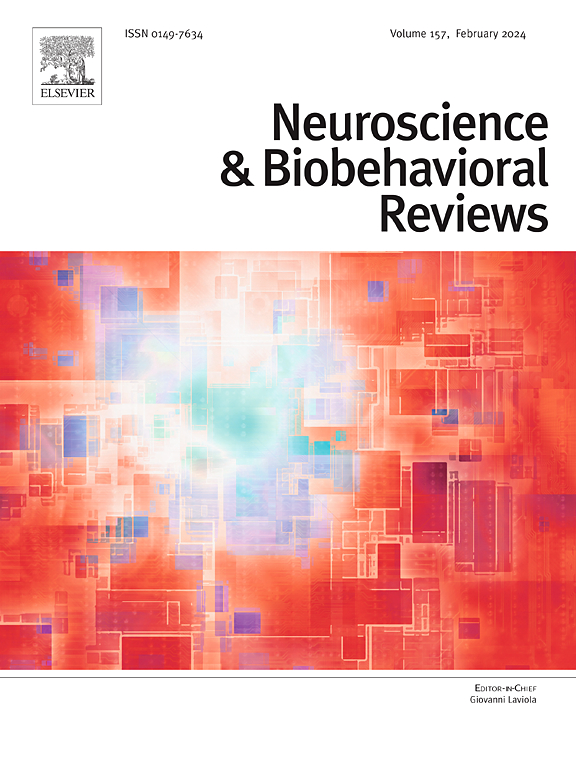改善成人精神分裂症症状的最佳运动剂量和类型:系统综述和贝叶斯网络荟萃分析。
IF 7.5
1区 医学
Q1 BEHAVIORAL SCIENCES
引用次数: 0
摘要
背景:运动有望帮助精神分裂症患者改善症状、生活质量、情绪和认知能力。这篇综述评估了不同体育活动在这方面的有效性,旨在指导治疗和研究对精神分裂症管理最有益的运动干预措施:本系统综述和网络荟萃分析检索了截至 2024 年 3 月 30 日的 PubMed、MEDLINE、Embase、PsycINFO、Cochrane CENTRAL、Web of Science 和 CNKI。我们使用 R 软件包 "gemtc"、"MBNMAdose"、"metafor "和 "ggplot2 "进行数据分析。为了评估纳入研究的偏倚风险,我们使用了 ROB2 和 CINeMA 工具:在系统综述和网络荟萃分析的结果部分,我们分析了 47 项研究的数据,涉及 4031 名参与者。我们的研究结果表明,在针对精神分裂症患者的各种运动干预中,瑜伽在改善总体症状、阳性症状和阴性症状方面最为有效。RT+AE(阻力训练+有氧运动)对一般症状的改善最大,而太极拳(TC)的效果最差。在改善认知功能和抑郁方面,AE 的效果最好,而 TC 的效果最差。EX+PT(体育锻炼+心理护理)被认为是对改善生活质量最有效的方法,而TC的效果又是最差的。据估计,改善患者总体症状的最佳运动总剂量为 1200 METs-min/周。(SMD:-0.956,95 %Crl:-1.376 至 -0.536):结论:瑜伽、RT+AE、EX+PT 和八段锦在缓解精神分裂症患者的临床症状、生活质量、抑郁状态和认知功能方面具有更强的疗效。我们确定了最佳的总体运动剂量,并为医护人员提供了运动指导建议。本文章由计算机程序翻译,如有差异,请以英文原文为准。
Optimal exercise dose and type for improving schizophrenia symptoms in adults: A systematic review and Bayesian network meta-analysis
Background
Exercise has shown promise in aiding patients with schizophrenia, potentially improving symptoms, quality of life, mood, and cognition. This review evaluates the effectiveness of different physical activities in this context, aiming to guide treatment and research towards the most beneficial exercise interventions for schizophrenia management.
Methods
This systematic review and network meta-analysis searched PubMed, MEDLINE, Embase, PsycINFO, Cochrane CENTRAL, Web of Science, and CNKI up to March 30, 2024. We utilized the "gemtc," "MBNMAdose," "metafor," and "ggplot2" packages for data analysis in R. Additionally, our results were reported as standardized mean differences with 95 % confidence intervals. To assess the risk of bias in the included studies, we used ROB2 and CINeMA tools.
Results
In the results section of our systematic review and network meta-analysis, we analyzed data from 47 studies involving 4031 participants. Our findings indicate that among the various exercise interventions examined for schizophrenia patients, yoga emerged as the most effective in improving Total symptoms, positive and negative symptoms. RT+AE (Resistance Training + Aerobic Exercise) showed the greatest improvement in general symptoms, whereas Tai Chi (TC) was the least effective. In terms of improvement of cognitive functions and depression, AE proved the most beneficial, while TC was found to be the least effective. EX+PT (Physical Exercise + Psychological Nursing) was identified as the most effective approach for improved quality of life, with TC again showing the least efficacy. The optimal total exercise dose to improve the patient's total symptoms was estimated to be 1200 METs-min/week. (SMD: −0.956, 95 %Crl: −1.376 to −0.536).
Conclusions
Yoga, RT+AE, EX+PT, and Baduanjin have demonstrated enhanced efficacy in alleviating clinical symptoms, quality of life, depressive states, and cognitive functions in patients with schizophrenia. We identified optimal overall exercise doses and provided exercise guidance recommendations for healthcare professionals.
求助全文
通过发布文献求助,成功后即可免费获取论文全文。
去求助
来源期刊
CiteScore
14.20
自引率
3.70%
发文量
466
审稿时长
6 months
期刊介绍:
The official journal of the International Behavioral Neuroscience Society publishes original and significant review articles that explore the intersection between neuroscience and the study of psychological processes and behavior. The journal also welcomes articles that primarily focus on psychological processes and behavior, as long as they have relevance to one or more areas of neuroscience.

 求助内容:
求助内容: 应助结果提醒方式:
应助结果提醒方式:


